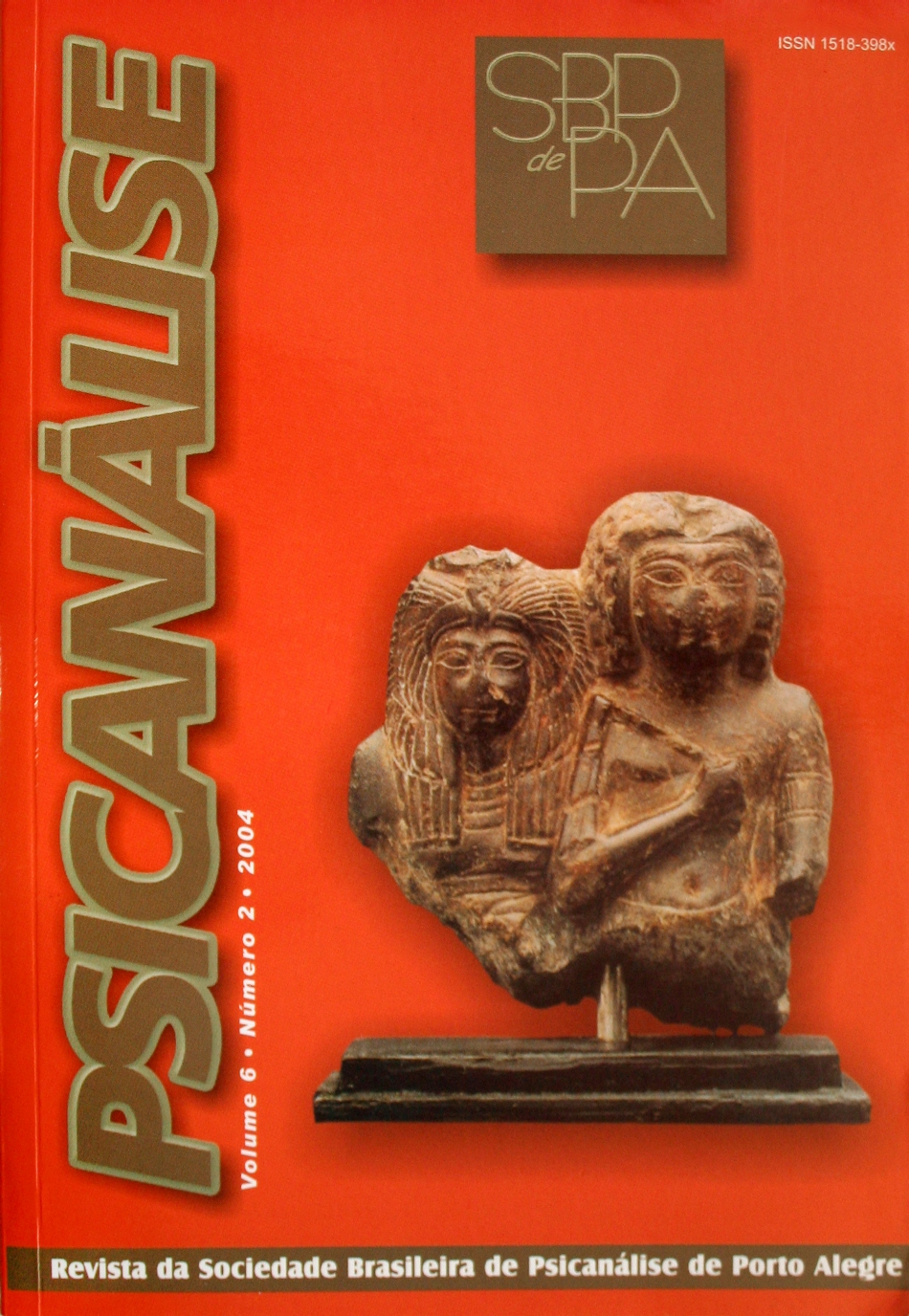Science-fiction and psychoanalytical game
DOI:
https://doi.org/10.60106/rsbppa.v6i2.159Keywords:
Fetal psyche, “Dreaming”, Psychoanalytic treatmentAbstract
In this essay, the author takes on enlarging the imaginative conjecture of the mind’s pre-natal aspects in order to include a diverse set of thoughts without thinkers and savage intuitions or non-domesticated thoughts. This extension aims at extending psychoanalytical investigation from the vortex of mental growth. I suggest the idea that there is an optimal method for a creative transformation andone that allows evolution for these pre-natal aspects. This method is dream-like thinking that acquires during the diurnal life the condition of pre-conceptual. Thisis one of the axes of the essay. The difficulties in clinical practice with patients that developed an “exoskeleton”, in detriment to the contact of their emotional life, made me reassess dreams, the usage of models and the personification as instruments that equal “toys”. The terms science and fiction as related to psychoanalysis contain a reflection on instruments that, combined, provide a binocular view to the observation of the field of psychical reality. “Psychoanalytical game” alludes to the extension of the psychoanalytical method to analysing children, thus providing them with the means to communicate their emotional experiences.Downloads
References
BION, W. R (1961). Experiences in groups. Londres: Tavistock, 1961.
______. (1967). El mellizo imaginario. In: ______. Seconds thoughts. Londres: William Heinemann Medical Books, 1967.
______. (1962). Aprendiendo de la experiencia. Barcelona: Paidós, 1966.
______. (1965). Transformations. Londres: William Heinemann Medical Books, 1965.
______. (1970). Attention and interpretation. Londres: Tavistock, 1970.
______. La tabla y la cesura. Buenos Aires: Gedisa, 1982.
______. (1978). Bion in New York and São Paulo. Pertshire: Clunie Press, 1980.
______. (1979). Making the best of a bad job. In: ______. Clinical seminars and four papers. Oxford: Fleetwood Press, 1987.
______. A memoir of the future. Londres: Karnak Books, 1990.
______. Cogitations. Londres: Karnak Books, 1991.
______. Taming wild thoughts. Londres: Karnak Books, 1997.
CORTÁZAR, J. Imagen de John Keats. Buenos Aires: Alfaguara, 1996.
FREUD, S. The interpretation of dreams. In: ______. SE. v. 4-5.
______. Formulations on the two principles of mental funcioning. In: ______. SE. v. 12.
KEATS, J. Letters. Oxford: Oxford University Press, 1970.
KLEIN, M (1929). La personificación en el juego de los niños. In: ______. The writings of Melanie Klein. Londres: Karnac Books, 1992.
MANKIEWICZ, R. Historia de las matemáticas: del calculo al caos. Buenos Aires: Paidós, 2000.
MELTZER, D. La aprehensión de la belleza. Londres: The Roland Harris Educational Trust Library, 1990.
_____. (1975). Exploración del autismo. Pertshire: Clunie Press, 1975.
MONEY-KYRLE, R. Man’s picture of the world. Londres: Duckworth, 1961.
PIRANDELLO, L. Seis personajes en busca de un autor. Buenos Aires: Ediciones del 80, 1980
PROUST, M. À la recherche du temps perdu, du côté chez Swann. Paris: Gallimard, 1994.
Downloads
Published
How to Cite
Issue
Section
License
I attribute the copyrights that belong to me, on this work, to SBPdePA, which may use and publish it by the means it deems appropriate, including on the Internet or in any other computer processing.
















